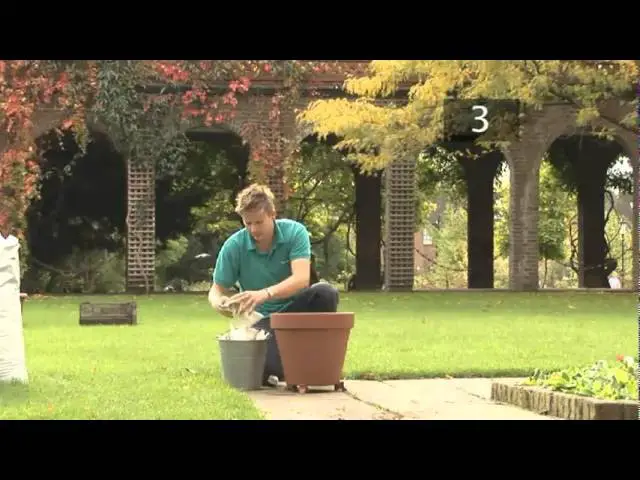How To Grow And Care For String Of Pearls Plant
The String of Pearls, also known as the String of Beads or Rosary, is a unique and low-maintenance houseplant that stands out due to its slender stems adorned with small bubbles. Belonging to the succulent family, this versatile plant can thrive in various environments, from indoors to outdoors, and even in water or hanging planters. Its adaptability makes it an excellent choice for busy homeowners or those new to plant parenthood. But what’s the key to keeping it healthy?
Let’s start with some essential facts.
The String of Pearls is a vine native to Southwest Africa, which explains its ability to grow in a variety of settings. While its beads are certainly its most striking feature, this plant also produces delicate, tiny flowers with hints of red, adding an extra layer of visual appeal.
In the following sections, we’ll delve into the specifics of planting, care, and troubleshooting for your String of Pearls.
Planting
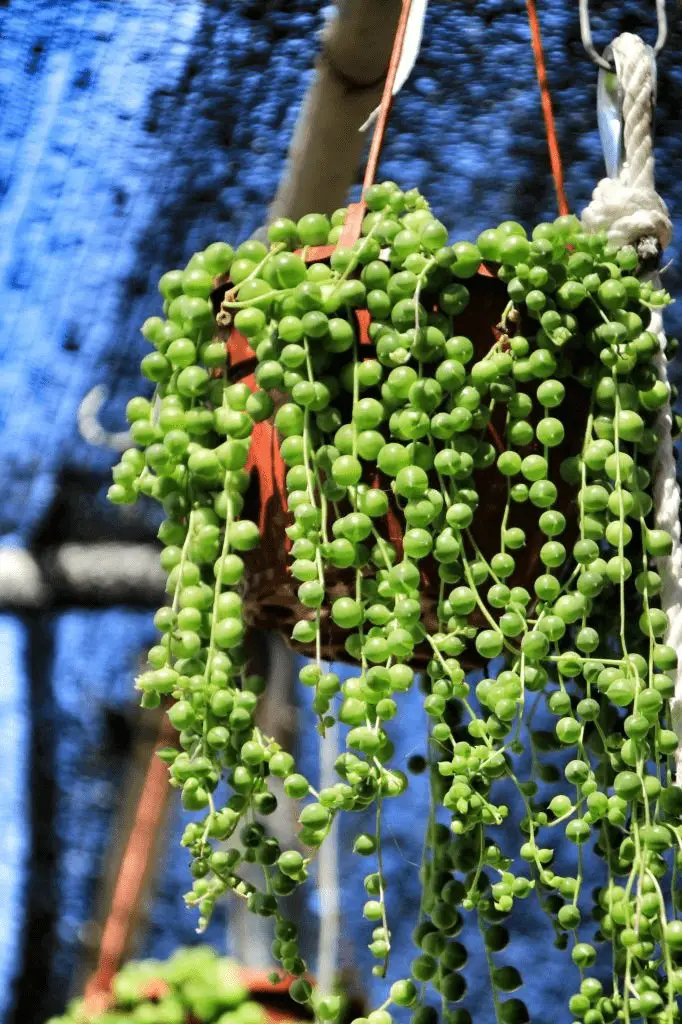
#1. When to Plant
When selecting the optimal planting window for your String of Pearls, consider the periods when it can bask in full sunlight. Spring and summer months provide ideal conditions for this succulent to thrive. It’s also worth noting that this plant is naturally drought-resistant and not well-suited for winter environments. As such, these two seasons represent the only viable times to plant your String of Pearls.
#2. Where to Plant
When it comes to the string of pearls, direct and bright light is a must. Ideally, place it in a spot that receives plenty of natural light, such as a windowsill. If natural light isn’t an option, artificial lighting can also work well. However, be aware that this plant has a tendency to sprawl, so make sure you provide it with ample space to grow. Hanging baskets are another great option for showcasing its unique trailing habit.
As the seasons change and spring arrives, prepare your string of pearls for blooms by reducing watering and moving it to warmer spaces. Then, when winter rolls around, repeat this process to ensure the plant thrives during the colder months.
#3. How to Plant
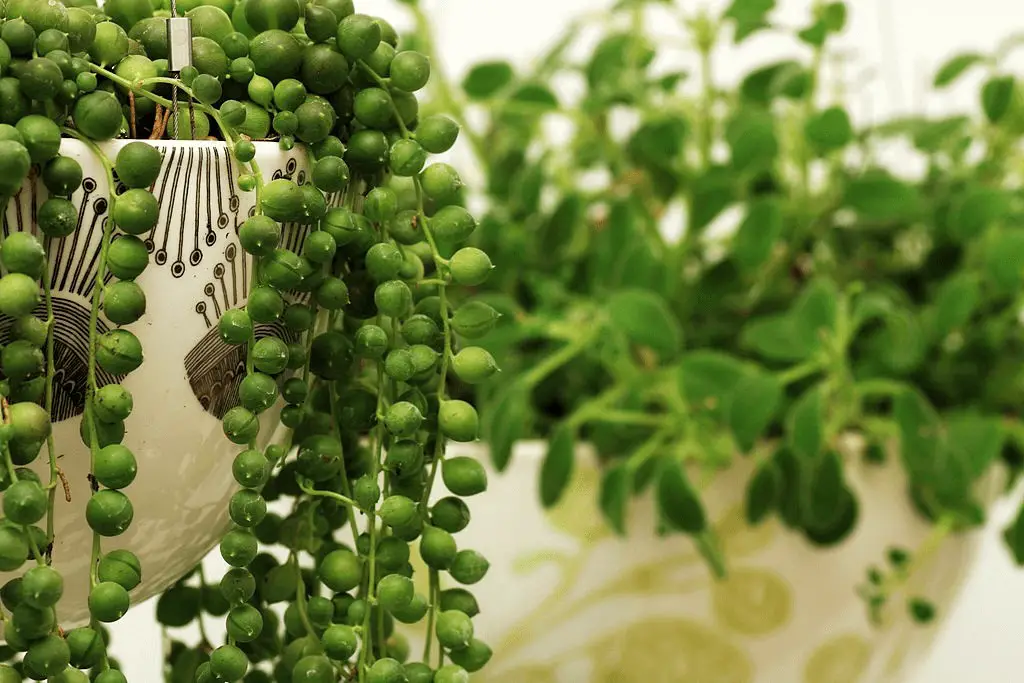
When it comes to planting string of pearls, you have two primary options: using seeds or stem offsets. To ensure optimal conditions, use a succulent-specific potting mix for the medium. Start by gently pouring in the seeds or planting the offsets into containers with built-in drainage holes.
For seed-planting, water the newly planted seeds sparingly but consistently over the course of 3-5 weeks, aiming for small beads to appear along the stem during this time.
Once the active growth phase subsides, limit watering and ensure the top layer of soil is completely dry before replenishing with more water.
Care for String of Pearls
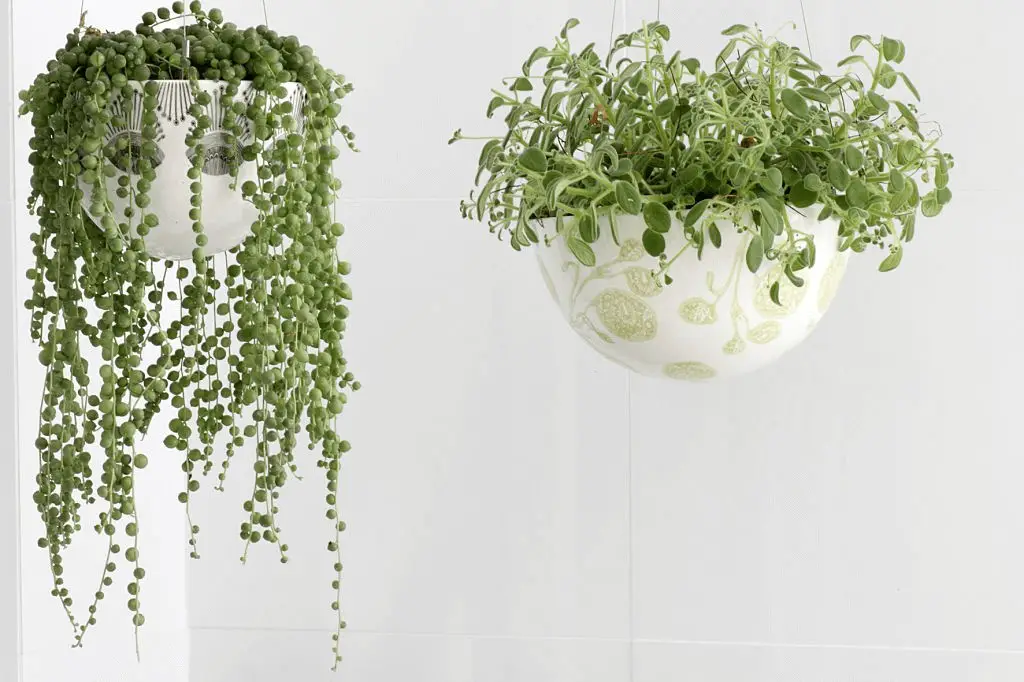
Soil
When it comes to finding the perfect soil potting mix for your cactus-loving friend, one option stands out as a clear winner: a high-quality cacti potting mix. This type of mix is specifically designed with fast-draining properties in mind, which makes it an ideal match for plants that thrive in well-aerated environments.
By using a sandy-based potting mix, you’ll be providing the perfect conditions for your cactus to grow strong and healthy, without the risk of waterlogged soil causing root rot or other issues.
Light and Temperature
This plant requires direct, bright light to truly flourish. Optimal temperature range for growth is around 22°C, particularly during its active growing phase. As the seasons change and the plant enters dormancy in the fall and winter, it’s essential to relocate it to a cooler environment with temperatures ranging from 10-13°C.
Water and Humidity
When it comes to hydration, this plant is surprisingly resilient and can thrive even with infrequent waterings. In fact, it’s best to only thoroughly water your plant once or twice during the active growth phase. Be cautious not to overdo it, as too much water can lead to root rot and dry soil conditions. On the other hand, a balanced level of humidity is ideal for its growth and development.
Fertilizer
While succulents don’t require a constant influx of fertilizer, they do benefit from occasional boosts during their active growth phases. Typically, this occurs during the spring and summer months when these plants are most vigorous. In reality, a single application every two to three weeks is sufficient to meet their nutrient needs.
Propagation
Stem offsets offer a straightforward way to multiply your plants. You have two options for propagation: direct sowing in soil or employing the slower, but more precise method of water propagation.
Pruning
To keep your succulent thriving, regular pruning is crucial, as it grows rapidly. This also provides an opportunity to promote healthy propagation. Simply remove any dead or dying stems, bubbles, or roots to encourage the plant’s natural growth patterns and prevent overcrowding.
Problems
Growing Problems and Diseases
While the string of pearls succulent is generally low-maintenance and easy to care for, it’s not completely immune to potential issues. Prolonged overwatering or fungal diseases can cause rot, making it essential to maintain a balance between moisture and good air circulation. However, with proper care, this succulent remains one of the most sought-after species, prized for its unique appearance and adaptability.
Pests
This lovely plant has one major drawback – it’s a magnet for small bugs when overcrowded in a planter. The tiny critters are attracted to the plant’s nutrient-rich soil, which can lead to competition with beneficial insects like ladybugs and lacewings. Furthermore, neglecting regular pruning can create an ideal environment for mites to thrive. To mitigate these issues, it may be necessary to spray insecticide on occasion, ensuring that the pests don’t outcompete the plant’s natural defenses.
FAQs
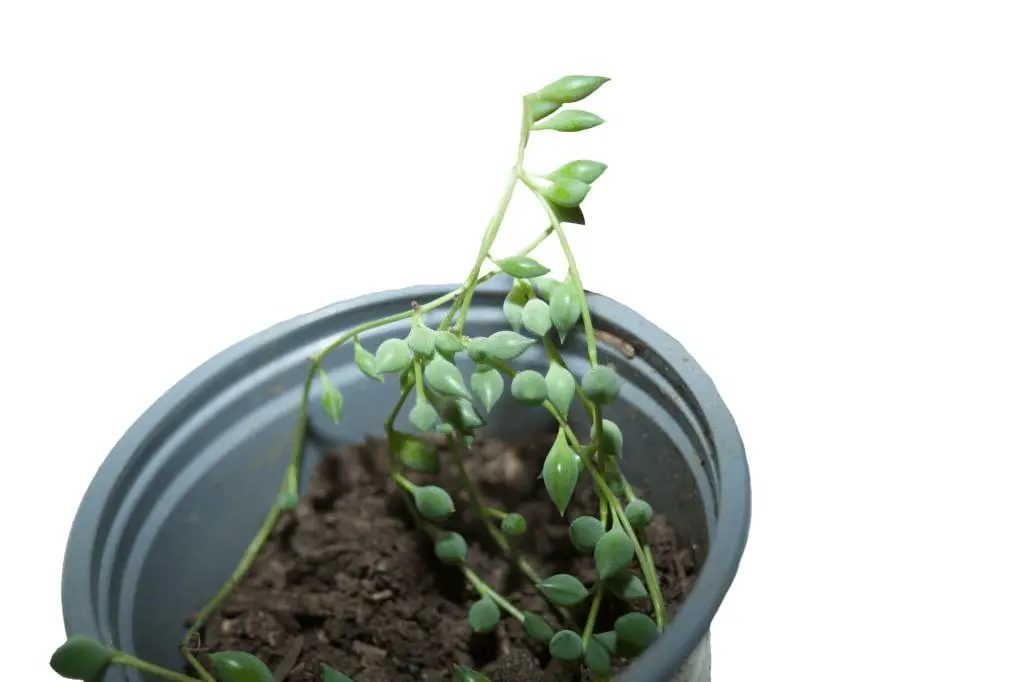
What is the first sign to look for to know if my string of pearls is dying?
One of the most telling signs of overwatering is the presence of shriveled leaves. If you notice your leaves starting to curl up or develop brown edges, it’s likely a sign that your plant has been given too much moisture. This visual cue can serve as a valuable indicator of when to scale back on watering.
Is it okay to grow string of pearls in water only?
While it may come as a surprise to some, propagating strings of pearls can be achieved simply by altering the aquatic environment. To do this, one need only remove a few pearls from the base of the cutting and place the remaining ones in a vase that’s less than half-full with water. This subtle adjustment can have a significant impact on the success of the propagation process.
References:
String of Pearls Photos
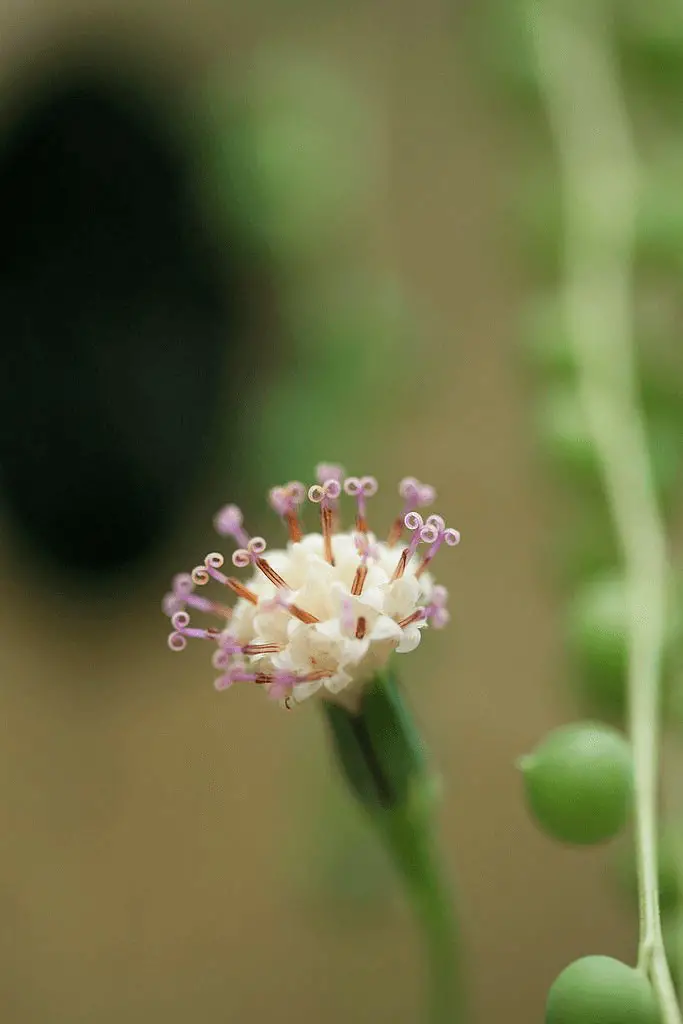
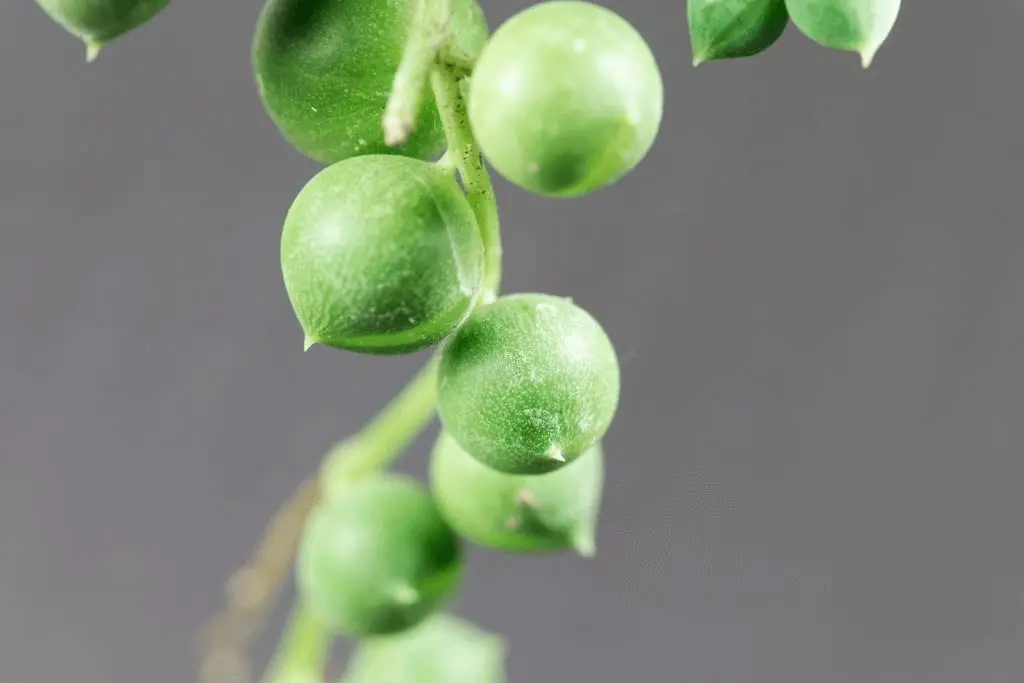
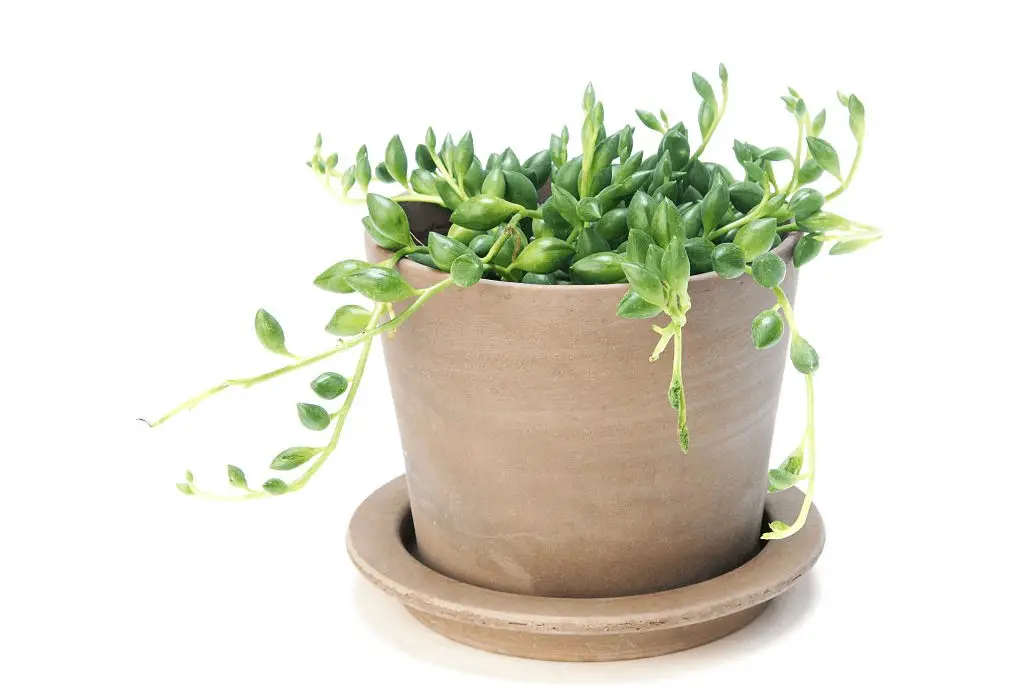
Related Posts
If you’re experiencing the frustration of succulent death, it’s not uncommon. In fact, succulents are notorious for their delicate nature and high maintenance requirements. However, there are some species that are more resilient than others. Two such examples include Peperomia Graveolens ‘Ruby Glow’ and Rhipsalis cereuscula (Coral Cactus). Not only do they require less attention than other succulent varieties, but they’re also incredibly unique in their appearance.
To successfully grow these species, it’s essential to understand their specific needs and care requirements. In addition to learning about the growing conditions for Peperomia Graveolens ‘Ruby Glow’ and Rhipsalis cereuscula, it’s also important to know how to properly plant succulents in containers without drainage. This can be a bit of a challenge, as most plants require some level of drainage to thrive.
However, with the right techniques and materials, you can create a beautiful and thriving succulent garden even in containers with no drainage. Of course, not all succulent species are created equal. Some, like Sedum Morganianum ‘Burrito’ (Donkey tail) and Sedum rubrotinctum ‘Pork and Beans’ (Jelly Bean Plant), require more attention and care than others. But with the right knowledge and techniques, you can learn how to grow and care for these species as well.
By understanding their specific needs and requirements, you’ll be well on your way to becoming a succulent expert.



